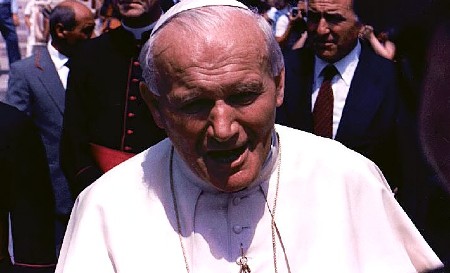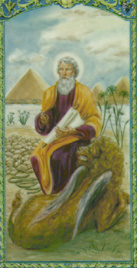We ask you, humbly: don't scroll away.
Hi readers, it seems you use Catholic Online a lot; that's great! It's a little awkward to ask, but we need your help. If you have already donated, we sincerely thank you. We're not salespeople, but we depend on donations averaging $14.76 and fewer than 1% of readers give. If you donate just $5.00, the price of your coffee, Catholic Online School could keep thriving. Thank you.Help Now >
Gabriello Fallopio
FREE Catholic Classes
Anatomist, "one of the most important of the many-sided physicians of the sixteenth century" (Haeser); b. at Modena, Italy, 1523; d. 9 October, 1562, at Padua. Some writers have placed his birth as early as 1490, but contemporary authority is for the date mentioned. His family was noble but very poor and it was only by a hard struggle he succeeded in obtaining an education. He studied medicine at Ferrara, at that time one of the best medical schools in Europe. After taking his degree he worked at various medical schools and then became professor of anatomy at Ferrara, in 1548. He was called the next year to Pisa, then the most important university in Italy. In 1551 Fallopio was invited by Cosmo I, Grand Duke of Tuscany, to occupy the chair of anatomy and surgery at Padua. He held also the professorship of botany and was superintendent of the botanical gardens Though he died when less than forty, he had made his mark on anatomy for all time. This was the golden age of anatomy and Fallopio's contemporaries included such great anatomists as Vesalius, Eustachius, and Columbus. It has sometimes been asserted that he was jealous of certain of the great discoverers in anatomy and that this is the reason for his frequent criticisms and corrections of their work. Haeser, whose authority in medical history is very high, declares that Fallopio was noted for his modesty and deference to his fellow-workers and especially to Vesalius. His purpose in suggesting corrections was the advance of the science of anatomy. Fallopio's own work dealt mainly with the anatomy of the head. He added much to what was known before about the internal ear and described in detail the tympanum and its relations to the osseous ring in which it is situated. He also described minutely the circular and oval windows ( fenestræ ) and their communication with the vestibule and cochlea. He was the first to point out the connexion between the mastoid cells and the middle ear. His description of the lachrymal passages in the eye was a marked advance on those of his predecessors and he also gave a detailed account of the ethmoid bone and its cells in the nose. His contributions to the anatomy of the bones and muscles were very valuable. It was in myology particularly that he corrected Vesalius. He studied the organs of generation in both sexes, and his description of the canal or tube which leads from the ovary to the uterus attached his name to the structure. Another structure, the little canal through which the facial nerve passes after leaving the auditory, is also called after him the aquæductus Fallopii . He was much more than a discoverer in anatomy. His contributions to practical medicine were important. He was the first to use an aural speculum for the diagnosis and treatment of diseases of the ear. His writings on surgical subjects are still of interest. He published two treatises on ulcers and tumors; a treatise on surgery; and a commentary on Hippocrates's book on wounds of the head. His treatise on syphilis is wonderful in anticipation of what is sometimes thought most modern in this subject. Fallopio was also interested in every form of therapeutics. He wrote a treatise on baths and thermal waters, another on simple purgatives, a third on the composition of drugs. None of these works, except his anatomy (Venice, 1561), was published during his lifetime. As we have them they are from the manuscripts of his lectures and notes of his students. They were published by Koyter (Nuremberg, 1575).
We ask you, humbly: don't scroll away.
Hi readers, it seems you use Catholic Online a lot; that's great! It's a little awkward to ask, but we need your help. If you have already donated, we sincerely thank you. We're not salespeople, but we depend on donations averaging $14.76 and fewer than 1% of readers give. If you donate just $5.00, the price of your coffee, Catholic Online School could keep thriving. Thank you.Help Now >








 Daily Readings for Thursday, April 25, 2024
Daily Readings for Thursday, April 25, 2024 St. Mark: Saint of the Day for Thursday, April 25, 2024
St. Mark: Saint of the Day for Thursday, April 25, 2024 Prayer for Policemen: Prayer of the Day for Thursday, April 25, 2024
Prayer for Policemen: Prayer of the Day for Thursday, April 25, 2024
